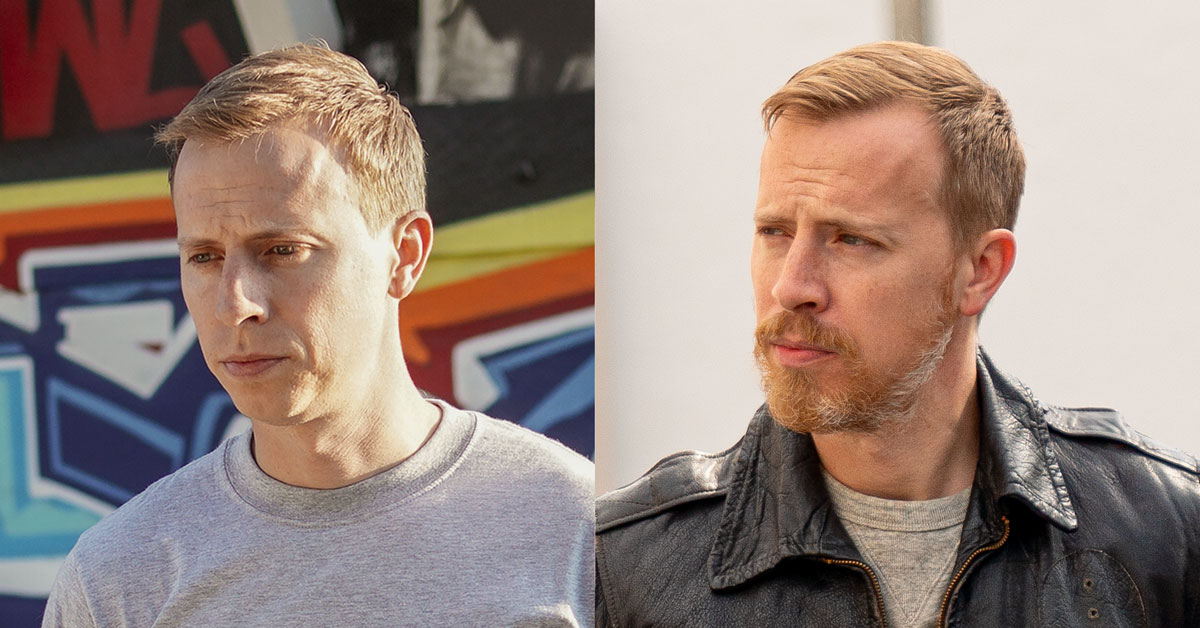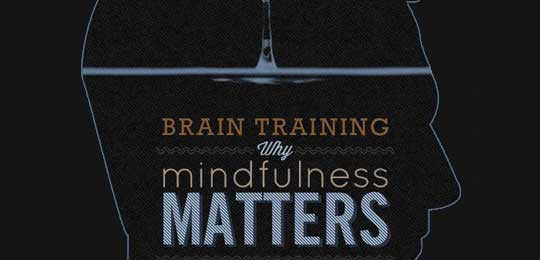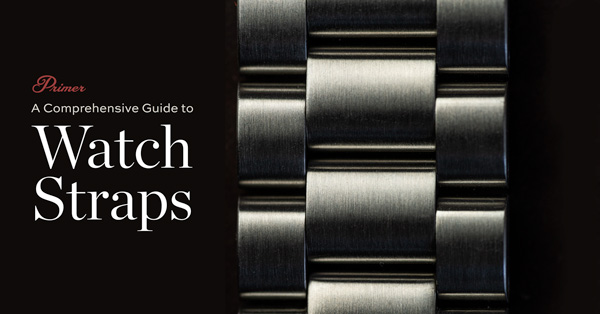Thanks to Brio for believing in Primer's mission and sponsoring this post. Primer readers who buy the Beardscape V2 receive the Zero Blade attachment ($24.99 value) FREE.
Facial hair is a big deal for guys. Kids in our grade hit that puberty mark, and it's like a competition to see who can grow the first semblance of a mustache. Rocking just 3 long hairs on each corner of the upper lip is a rite of passage into manhood. And let me tell you, I was never a part of that competition. Not that I didn't want to be. It's just that, well, my facial hair was a little… non-existent.
Some of you guys never had a problem growing facial hair, walking around at 14 with a full Al Borland beard, making the rest of us look like prepubescent chipmunks. Even into my twenties, thirties, it was like a desolate wasteland up here. I could go two weeks without shaving and still look like a 2nd year Webelo Scout returning from a camping trip.
And when it finally did start to come in? It can't really be considered facial hair since it was all from my jawline down. My neck hair decided, “Hey, if your face isn't going to step up to the plate, we will!” I guess I should be grateful, maybe neckular hair is better than no hair at all?
So there I am, bouncing through life cracking jokes about not being able to grow facial hair… and then came 2020. The world is chaos, we're all stuck at home, who's got the initiative to remember to shave when no one is around to make neckbeard jokes?
So, one day I roll out of bed, walk past the mirror and… what's that on my face? “I HAVE FACIAL HAIR!”
It took a global pandemic for my face to finally grow some fuzz. A round of applause for my late-blooming face at 36:
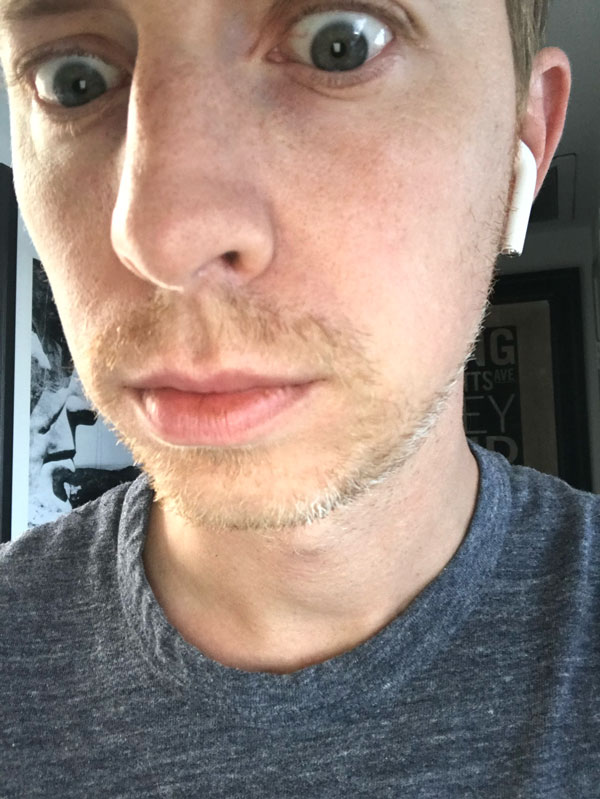
As much as I had hoped this was the beginning of a wonderfully overgrown beard, it, alas, was not. Let me walk you through the patchy process and what I learned to eventually get to a place where I both A) like my facial hair, and B) like the way it contributes to my appearance: The two actual things any facial hair should be judged by.
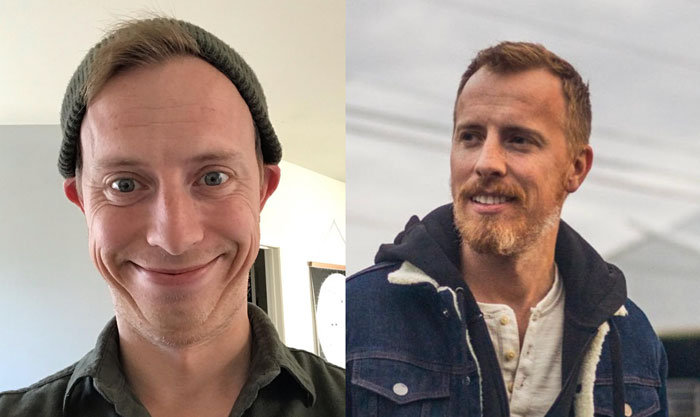
But first the thing every guy with not-so-ideal facial hair already knows: There's such a stigma aimed at boys and men who attempt to grow facial hair that doesn't meet the idealized density and growth pattern.
Some desolate mustache whiskers come in, a couple long-stranded patches on a cheek and it's off to the razor before someone can make fun of you.
Many men, myself included, become too intimidated to allow their facial hair sufficient time to fully grow out, never truly discovering if they could achieve a satisfactory beard.
And the internet, a vast sea of information and advice for every facial hair type, right? Unfortunately, most of the commonly available beard advice, even directed at men with patchy or sub-optimal growth, is provided by men with god-like beard genetics.
It's like turning on YouTube and seeing Timothee Chalamet providing advice to average Joes on how to be more attractive. No disrespect to Mr. Chalamet (or the beard-lucky), but he has no reference point for us less-than-perfect guys.
What's more, there are the comments from men, those who have been shamed into keeping their patchy beards shaved off. These guys further the bad blanket advice continuing a cycle of misinformation, leading many of us to give up on our potential beards, simply because someone else couldn't make it work.
This is where it gets real: just as people with thick hair on their heads have specific care requirements and styling considerations, so do we, the patchy-bearded brigade. Caring for and styling a sparse beard is different from managing a dense one, and the advice from our perfectly bearded brethren may not be of much help.
This is precisely why I've decided to write this guide: a beacon of light for men who haven't hit the beard jackpot. This is not advice from a guy with a Gandalf-like beard, but from someone who knows what it's like to have a face that doesn't quite cooperate when it comes to growing facial hair.
Here are the 5 things I've learned to make sparse facial hair work for me:
1. Your facial hair may not be as bad as you think: Not all of your facial hair grows at the same rate.
Previously my decision to shave was predicated on whether or not my neckbeard had gotten long enough that people could see it. I'd grown accustomed to the routine – the neck gets to a point where it needs a shave, and so the entire face gets a shave.
As I learned in lockdown, the patchy spots on my face weren't barren because they lacked hair – they just needed time to catch up.




Turns out, you need to give your facial hair a few months of growth to truly understand what you're working with. That doesn't mean you're committing to walking around with a full neckbeard and 5 mustache whiskers for 3 months. A trim here and there on the fuller/longer areas can keep things neat while the slower growers catch up. I found some great before and after shots on Reddit that really illustrate this, like this guy going from patchy wisps to an impressive full beard in a matter of 16 weeks. So many guys get to the 1 month mark looking like him and assume a mustache and goatee is the only thing possible.
2. Length can’t make up for lack of fullness, in fact it’s the opposite
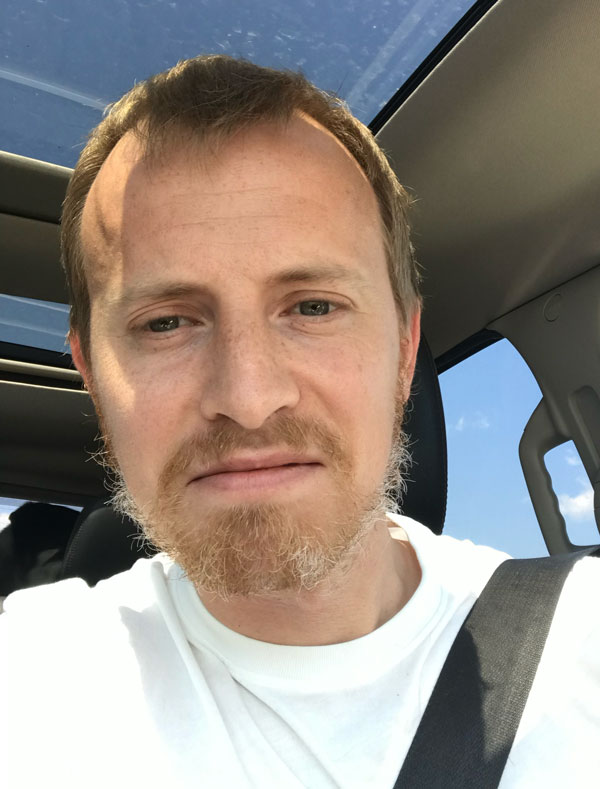
This is the biggest place I think us patchy guys get into trouble. We let our facial hair grow and are on that blurry line of “is it or isn't it” and attempt to let long facial hair compensate for the sparse growth pattern.
Unfortunately, growing your beard longer won't camouflage any patchy areas. Instead, it's like putting a spotlight on them. It's like trying to cover up a bald patch by combing over long wispy strands – it ends up somehow emphasizing the baldness instead of hiding it.
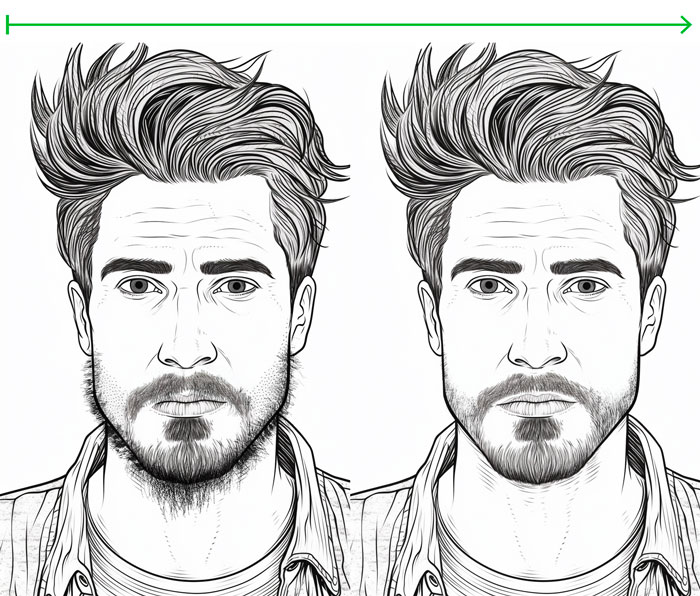
The trick here is similar to dealing with baldness: the less hair you have in an area of your face, the shorter it should be. Makes sense, doesn't it?
The appearance of a patchy or sparse beard largely depends on its shape. A poorly-shaped patchy beard can draw attention to its inconsistencies, making it look even more patchy. On the other hand, a thoughtfully shaped beard can cleverly reduce patchiness, making it look more consistent and intentional.
Let's dive deeper into understanding how this can be achieved:
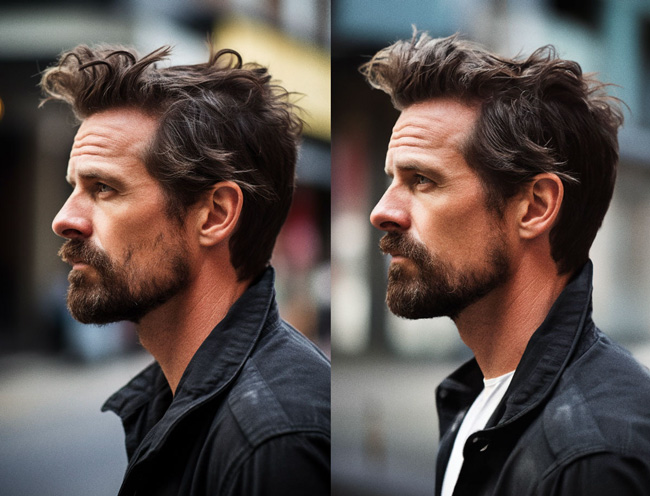
- Acknowledge variations: If the hair on your upper cheeks grows in less dense than on your neck or jawline, maintaining it at the same length or even trying to have it longer to compensate like I did initially, will only highlight the patchiness. Shaving the less dense areas gives you less of a beard but one that is fuller looking.
- The longer it gets, the more different sections should vary in length: When your beard is short, the length of the hair appears more uniform. As the hair grows longer, there should be a greater variation in length, as it requires shape. Think about it: a man with a long beard will have a shorter mustache than his chin and neck hair, and the hair below his sideburns and on top of his cheeks also won’t be the same length as his chin hair. This principle applies even more so for those without strong growth patterns or dense hair. To do that:
- Taper for a natural look, especially on your cheeks and jawline. If your hair growth is sparse in these areas, tapering, where the sparser areas are shorter increasing in length to your full areas will create a natural gradient effect and subtly disguise the patchiness.
Remember, there's no ‘one size fits all' in beard grooming. Understanding your unique growth patterns and density can help you make the most of what you've got. With a bit of creativity and patience, even a patchy beard can contribute to your appearance.
3. Choose a style that works with patchy areas, don’t resent them
Just because you can't grow the full, dense beard of your dreams doesn't mean you shouldn't have any facial hair. And honestly, most people won't even notice your patches unless you point them out or draw attention to them like discussed above.
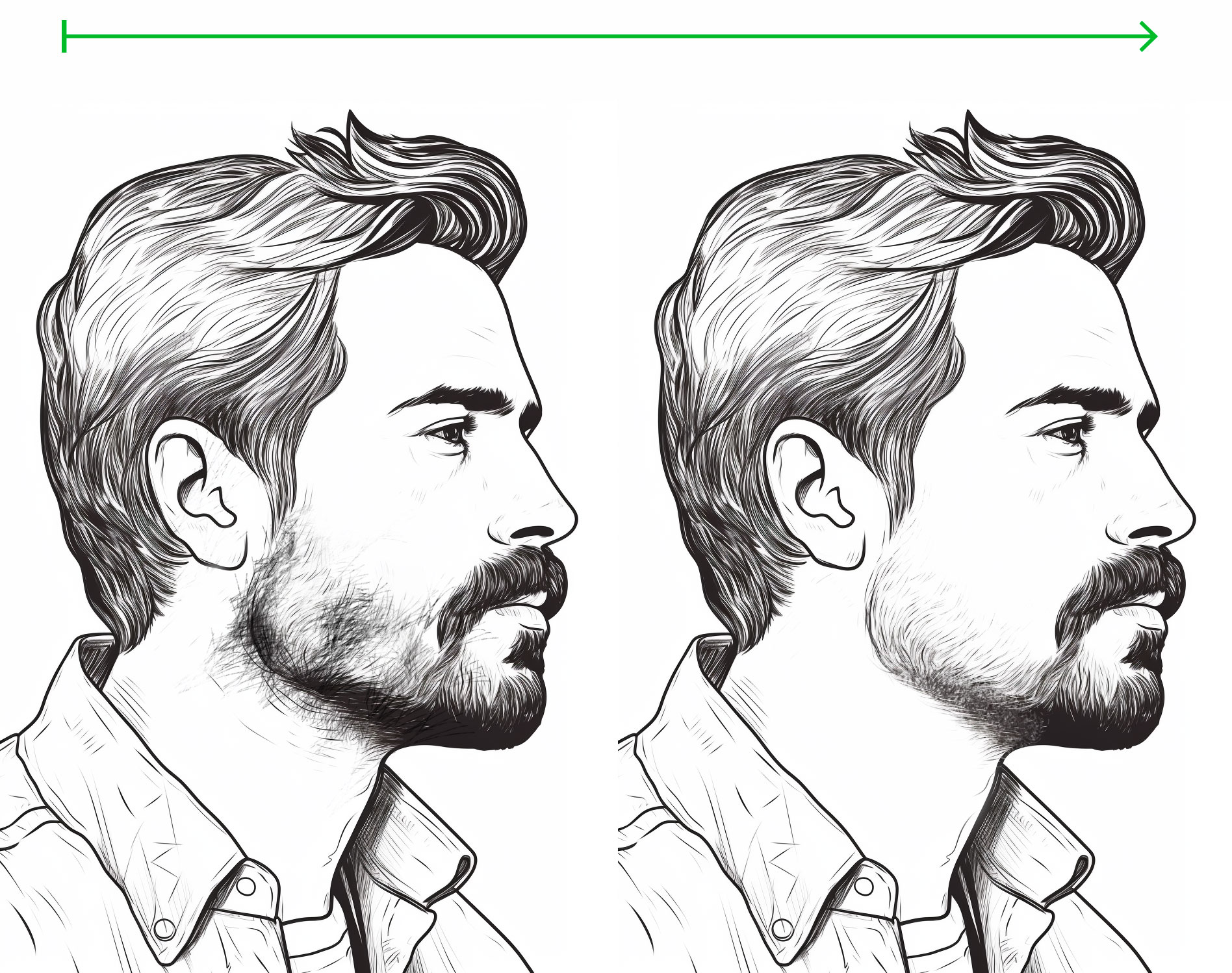
The key here is to embrace what you've got and find a style that enhances your appearance. Sure, it might not be the style you'd ideally want, but that doesn't mean it can't look great on you. It's all about finding that sweet spot between what you want and what you've got.
Determine your trouble spots and shape your facial hair in a way that they are less obvious.
4. You will have to maintain parts of your beard at different intervals
Something I never knew before trying to maintain a beard is it's not a one-size-fits-all deal. My neck hair grows like a weed and needs weekly shaves, but my mustache? I trim once a month, tops. And, contrary to what you might think, a patchy beard might actually require more upkeep than a full one. While taking volume off of my chin or mustache is every couple of months, I have to trim the sparse hairs on the top of my cheeks every week. If I don't keep the hairs on my jawline in order, they begin to poke out in every direction, which again, emphasizes my lack of density because of how long my facial hair is.
That's where beard grooming products come into play. They're like the secret weapon in your beard maintenance arsenal, helping to train your beard and keep it looking its best:
5. Good tools make a big the difference
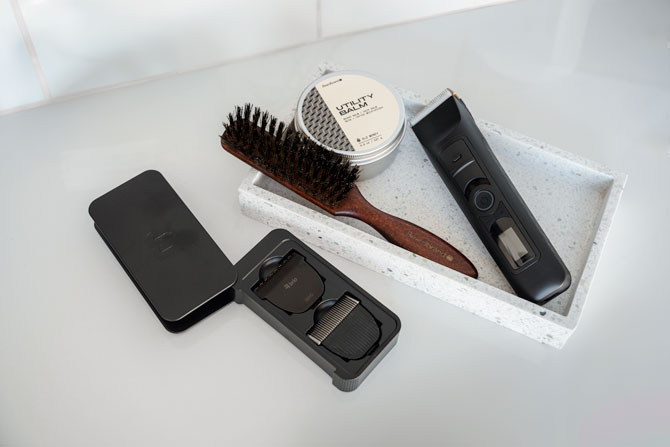
Growing and maintaining a beard, particularly a patchy one, can be likened to a fine art. The finished masterpiece depends heavily on the tools you choose to use. When your beard isn't as dense or even as you'd like, shaping becomes crucial to the appearance of your facial hair. Even more so than guys with full, lush beards, shaping can really make or break the look of a beard that's more…well, let's just say, ‘unique.' Just imagine: you're standing in front of a mirror, trying to carve out the best version of your beard. The better the tool, the more refined the result.
For me, having a good brush, like a boar's head brush, is vital. When beard hairs are precious, having them curl off in a wild frenzy can emphasize sparseness by revealing how long they are, highlighting the lack of fullness. Now, if you smooth those curls out and convince them to lay in the ideal direction, you're in for a much neater, more together look.
And for the brush to really do its job, use a beard-softening product. Beard softeners, oils, or creams—think of them as your beard's personal styling team. They're essential for getting your facial hair to fall in line and cooperate with the look you're going for. These products, though often overlooked by guys with shorter, patchier facial hair, are as personalized as a tailor-made suit. They cater to different hair types, different densities, and can transform your beard from a scraggly shrub into a neatly pruned hedge.
You've got to find the type that works best for your hair, just like hairstyle products; start with an oil and/or softener and go from there.
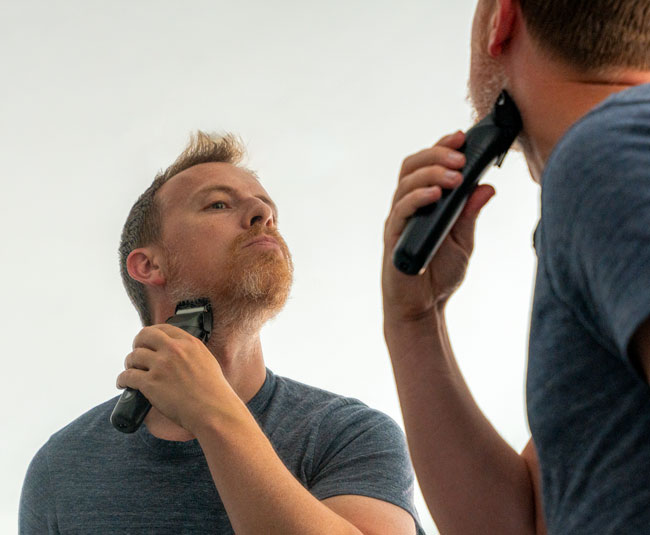
If your beard is a bit rebellious, you'll likely need to groom it more often. And when you're in need of some trimming, you're going to want a tool that's quick, sharp, precise, and always has juice.
I've been using the Brio Beardscape since 2018, long before I could even think of growing a proper beard, and it's been a lifesaver. This device is as essential to my grooming routine as my cup of coffee is to my morning. Why? Because it's widely considered the best beard trimmer on the market. It's like the Rolls Royce of trimmers. Heavy-duty, 7,200 RPM motor, with a battery that I only charge twice per year. Plus, the blades are ceramic, which is 4 times harder than stainless steel, creates less heat and friction, and is quieter.
But the real game-changer? The attachments. Brio offers a Zero Blade attachment for those who want ultra-close trims, a body hair attachment (because, let's face it, who wants to use the same blade for your face as…anywhere else), and a handy blade box to keep all your attachments organized. It's the Swiss Army Knife of trimmers.
For tapering my beard like I mentioned above, I use it both with and without the included length guards in a scooping motion, similar to the way your barber does at the back of your neck. This gives me that shorter-to-longer transition that de-emphasizes my sparser areas and keeps my fuller chin and mustache.
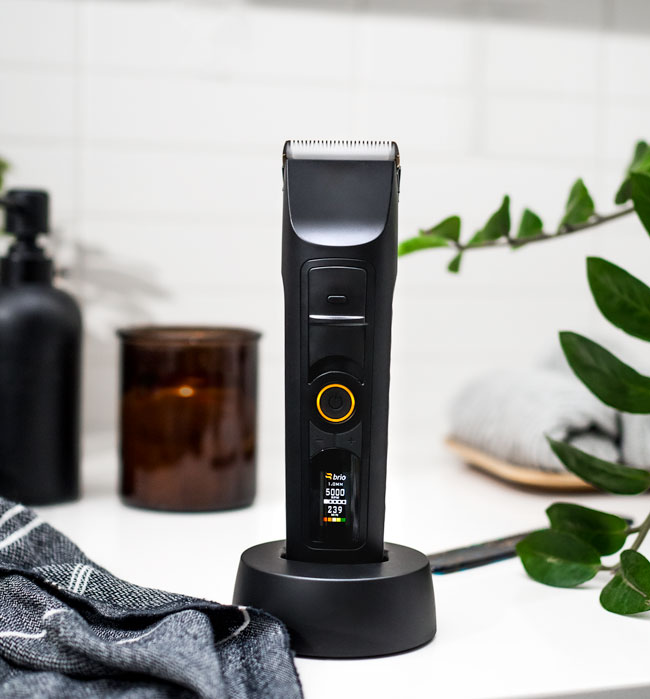
Equipped with three blades, including two that can be adjusted, the Beardscape trimmer is ready for anything you throw at it. Beards, stubble, haircuts, trimming to super short lengths—you name it, it can handle it. Simply put, there's no other trimmer out there that can compete with its comprehensive heft and functionality.
6. Find inspiration for guys who have facial hair like you
Once you've embraced your patchy beard, it's time to find your ‘beardspo'. There are so many guys out there with different types of sparse or patchy beards that look great. It's just about finding the right look for you. And remember, you might be your own worst critic.
Begin paying attention to the facial hair you encounter and how different styles line up with your own areas that aren't as full as you'd like. Places like Instagram and Pinterest can also be helpful to save examples that you find.
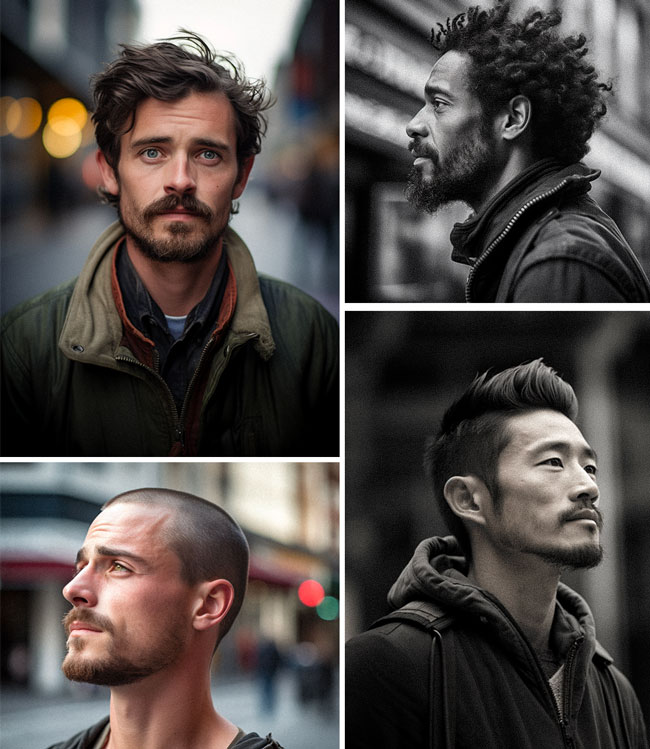
Sometimes, it's about standing in front of the mirror, looking at your patchy, wiry beard, and saying, “You know what, beard? We're going to make this work.” So here's to us, the less-than-perfectly-bearded men, I hope you're finally able to both A) like you facial hair, and B) like the way it contributes to your appearance.



